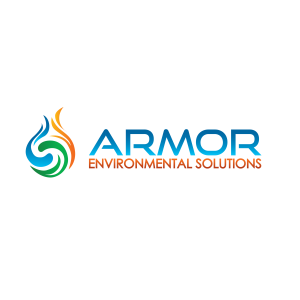Once the hurricane passes, most people think they are in the clear. Even though the strong winds and major danger has passed, there are still several risks to your business you need to keep an eye out for.
Here are some of the most common issues that pop up after hurricanes.
⦁ Water damage
Even if flood water recedes quickly, water damage can become a big issue. Water can affect walls, flooring, roofing, and equipment, among others. Even if you aren’t in an area affected by flooding, water damage can be caused by leaks. After strong rains and winds, roofing can shift and water can begin to seep through. Humidity, moisture and stains need to be removed professionally, and Armor Environmental Solutions is ready to help.
0. Mold
Mold is a side effect of moisture, humidity, and water leakage that is not promptly removed. It can occur after a surface has had direct contact with water and is not in an area that easily dries out, or simply due to a very moist environment, as can occur during a hurricane or storm and in the days following. Mold is a hazard to the appearance of your business, but, most importantly, to the health of your employees. mold must be removed promptly by experienced hygienists, like the ones at Armor Environmental Solutions.
0. Infrastructure Damage
The damage of some infrastructure can only truly be felt after the storm is over and water has receded. This includes sewage damage, water services, public transportation, electricity and gas systems, and communications. If the infrastructure of your business was affected by the hurricane or storm, you can get in touch with Armor Environmental Solutions to help clean up the damage.
We can’t prevent hurricanes from coming our way, but we can act fast once damage has occurred to make sure it doesn’t make a big dent in our business income. Getting in touch with an environmental cleanup expert like Armor Environmental Solutions will help you get your business up and running in no time.
3.
How Common Are Storms and Hurricanes in the US?
It seems that the US gets hit by a major hurricane or tropical storm almost every year.
Are hurricanes and tropical storms really that common in the US?
The Hurricane Research Division of the National Oceanic and Atmospheric Administration (NOAA) has recorded the number of named storms, hurricanes, and major hurricanes in the Atlantic Basin since 1851.
The average number of hurricanes and storms per year in the Atlantic Basin, taking data from over the past 50 years, is as follows:*
⦁ 12 named storms
⦁ 6.3 hurricanes
⦁ 2.5 major hurricanes
Note that these are the average numbers of storms and hurricanes that develop in the Atlantic Basin, but not all make landfall in the US.
On average, the number of storms and hurricanes that make landfall in the US per year are:*
⦁ 1.7 hurricanes
⦁ 0.6 major hurricanes
The maximum number of hurricanes to ever hit the US in one year is a whopping 6 hurricanes and 4 major hurricanes.
In other words, data shows that the US will be hit by at least one hurricane per year.
Don’t let the next storm or hurricane catch you off guard. Call Armor Environmental Solutions to ask how we can help you be better prepared should your business be affected by a natural disaster.
4.
What Does the Category of a Hurricane Mean?
As you watched the news report about the changing strength of Hurricane Dorian and Hurricane Humberto, did you wonder what it meant for each of these storms to be categorized as category 1, 2, or even 5 hurricanes?
From the natural disaster cleanup and restoration experts, Armor Environmental Solutions, here is your quick guide to deciphering hurricane categories.
First thing to know: hurricane categories are based on what is called the Saffir-Simpson Hurricane Wind Scale. It is a scale that categorizes hurricanes from 1 to 5 based on hurricane wind speed.
The higher the category, the greater the wind speed.
Here is your quick guide to understanding hurricane categories:
⦁ Category 1: 74-95 mph. Very dangerous winds will produce some damage.
⦁ Category 2: 96-110 mph. Extremely dangerous winds will cause extensive damage.
⦁ Category 3: 111-129 mph. Devastating damage will occur.
⦁ Category 4: 130-156 mph. Catastrophic damage will occur.
⦁ Category 5: 157 mph or higher. Catastrophic damage will occur.
Armor Environmental Solutions is a team of experts equipped especially to clean up damage caused by hurricanes of all categories, and other damage caused by natural disasters.


